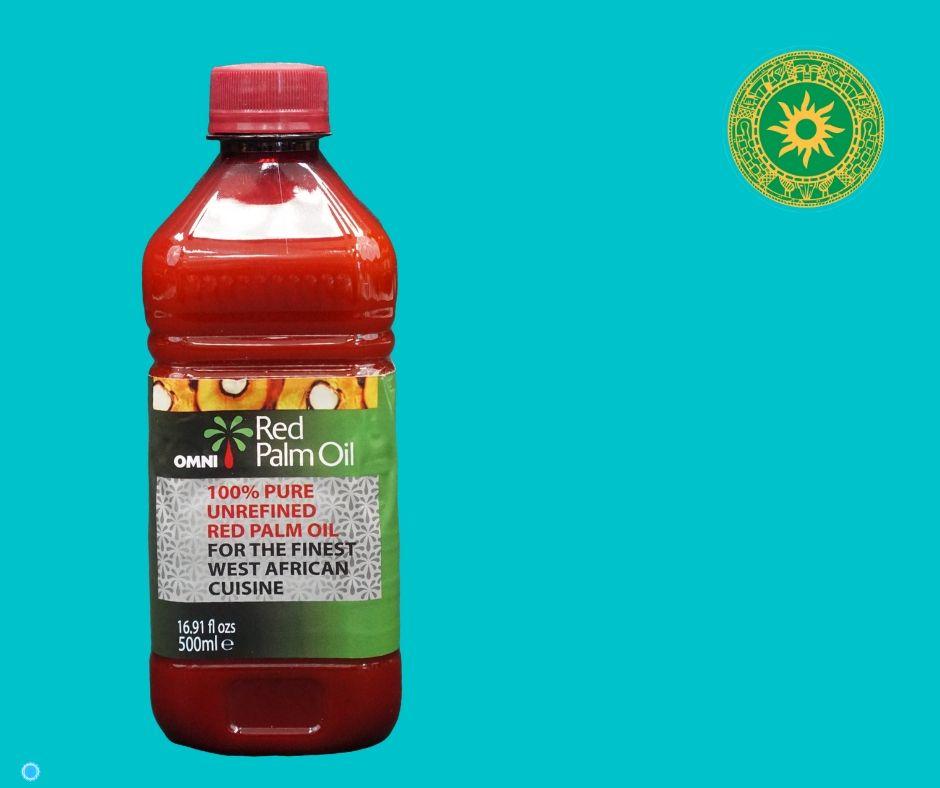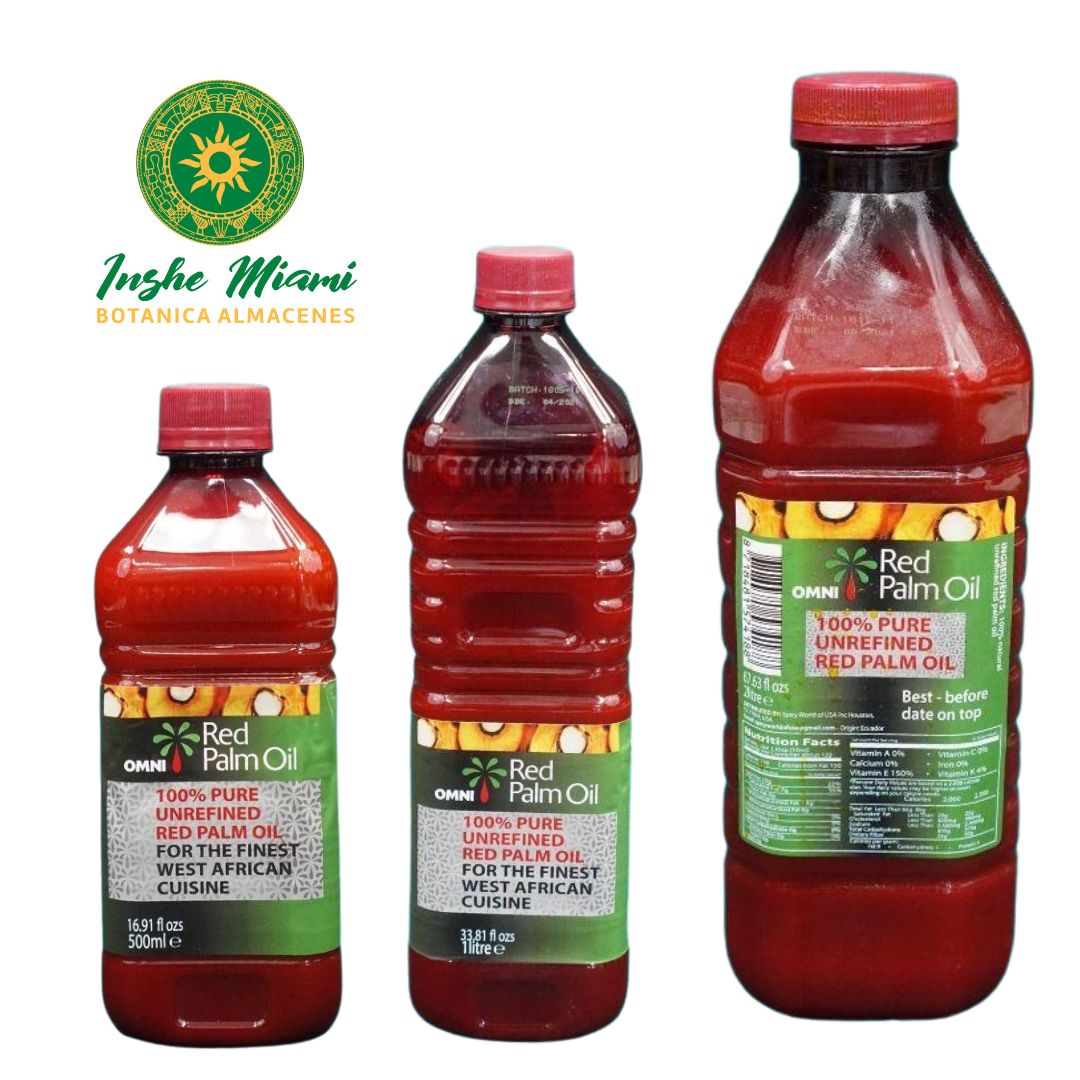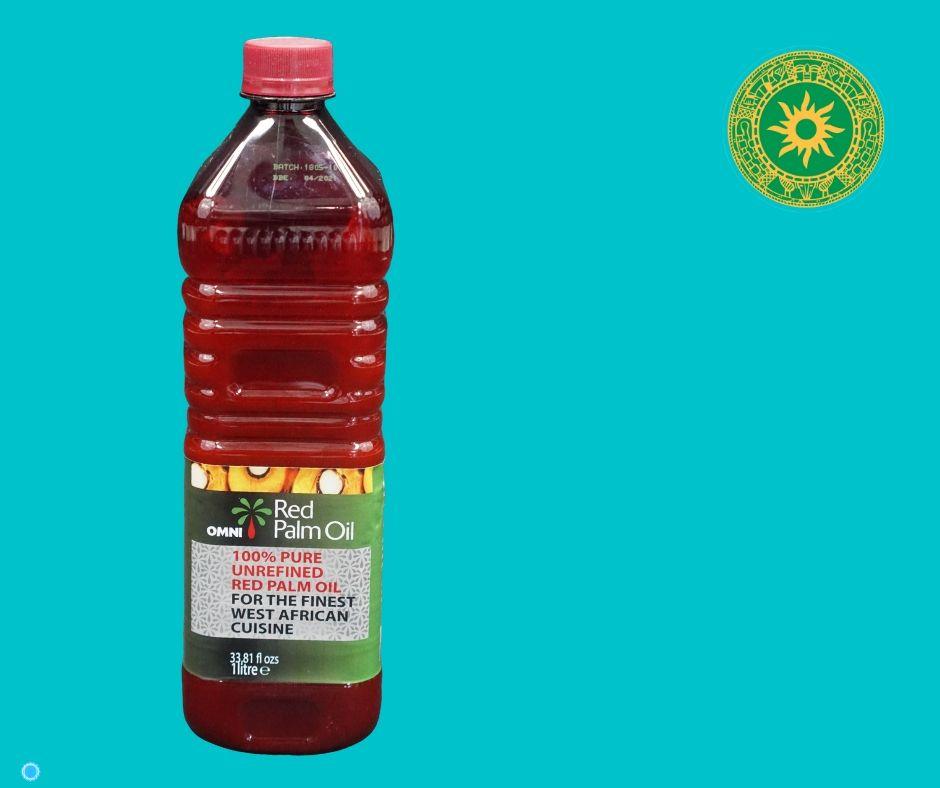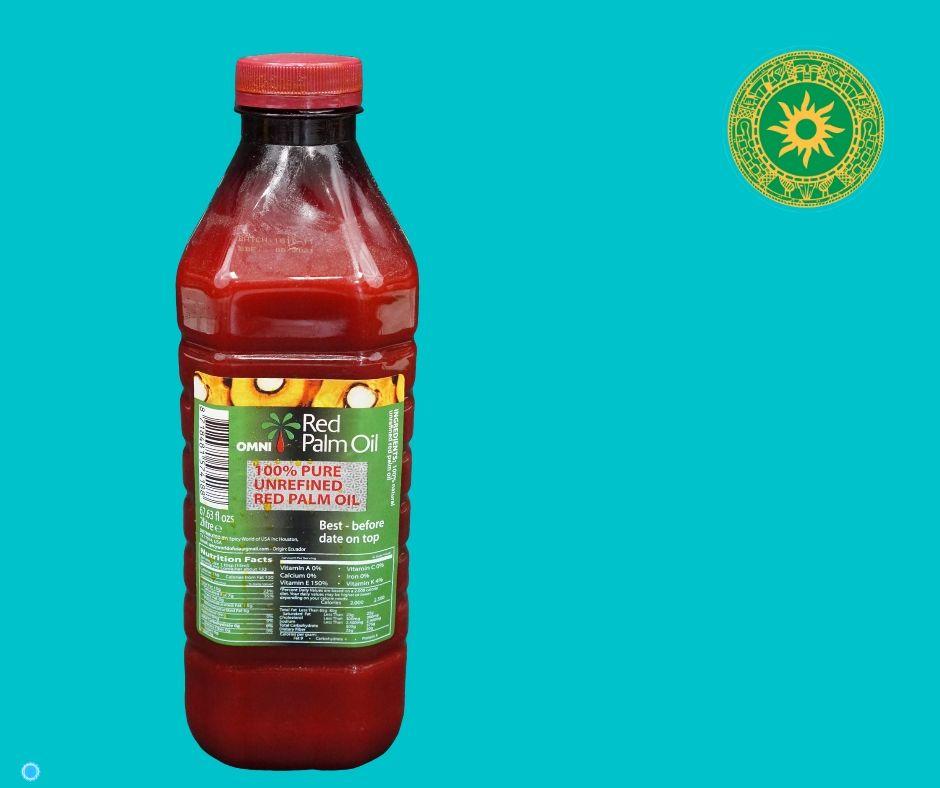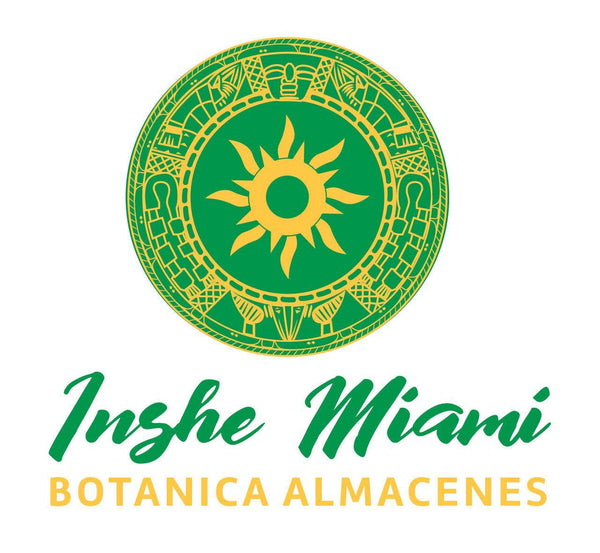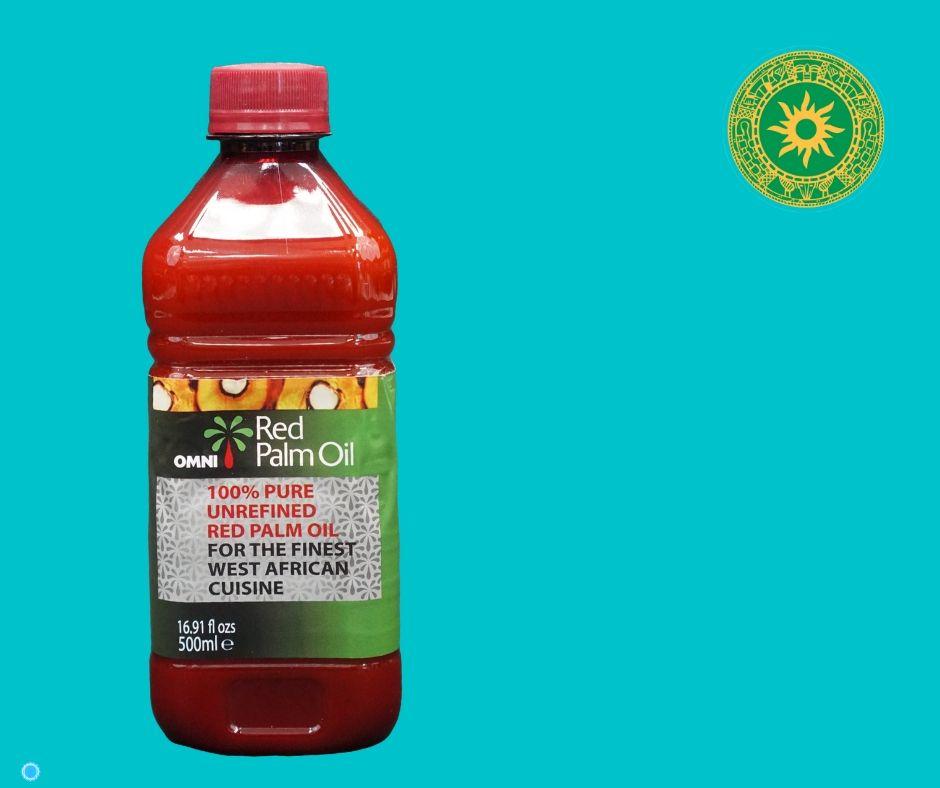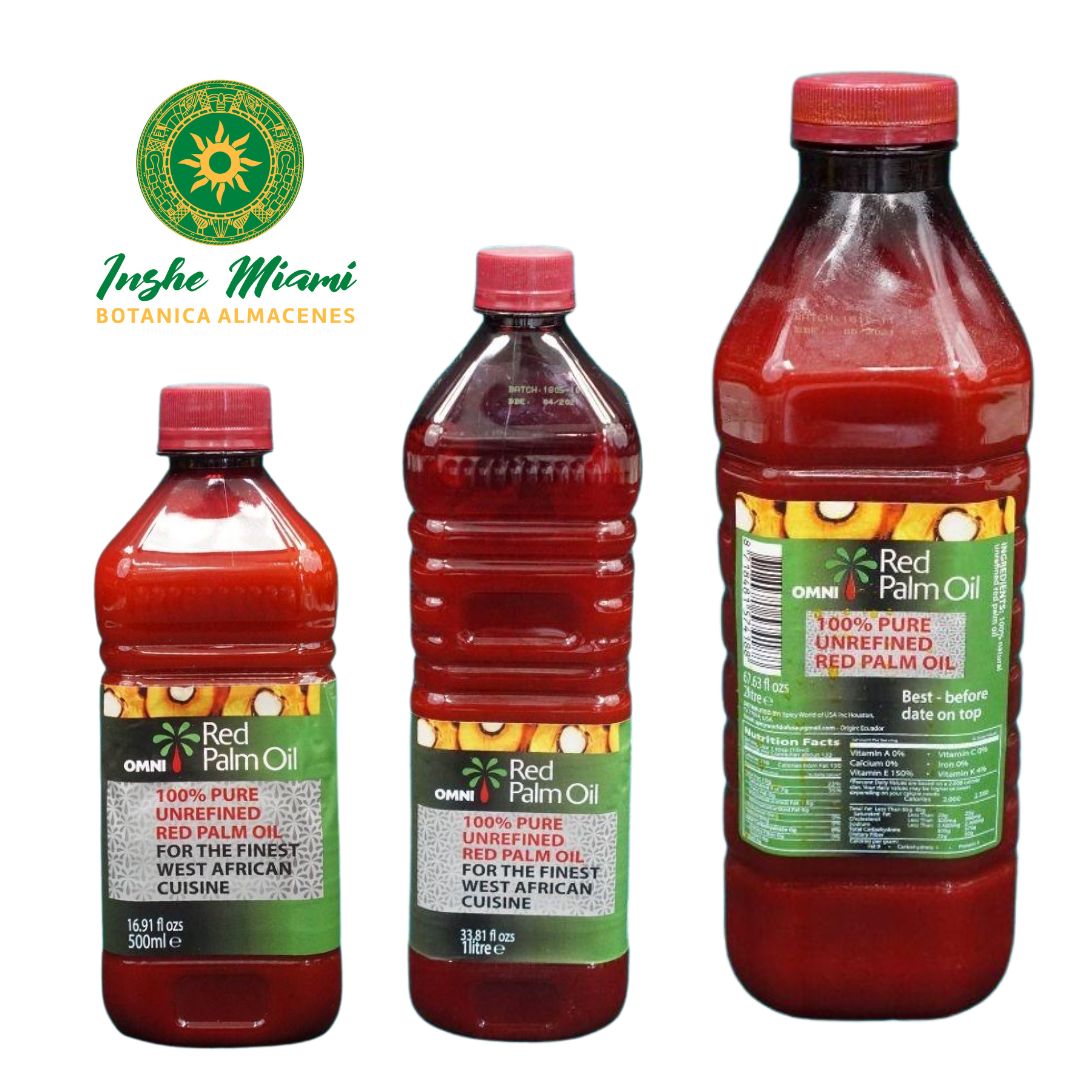INSHEMIAMI
Manteca de corojo / Epo pu pua / aceite de palma / kenel oil.
Manteca de corojo / Epo pu pua / aceite de palma / kenel oil.
No se pudo cargar la disponibilidad de retiro
Humans used oil palms as far back as 5,000 years. In the late 1800s, archaeologists discovered a substance that they concluded was originally palm oil in a tomb at Abydos dating back to 3,000 BCE.[9]
Palm oil from E. guineensis has long been recognized in West and Central African countries, used widely as a cooking oil. European merchants trading with West Africa occasionally purchased palm oil for use as a cooking oil in Europe.
Palm oil is naturally reddish in color because of a high beta-carotene content. It is not to be confused with palm kernel oil derived from the kernel of the same fruit[14] or coconut oil derived from the kernel of the coconut palm (Cocos nucifera). The differences are in color (raw palm kernel oil lacks carotenoids and is not red), and in saturated fat content: palm mesocarp oil is 49% saturated, while palm kernel oil and coconut oil are 81% and 86% saturated fats, respectively. However, crude red palm oil that has been refined, neutralized, bleached and deodorized, a common commodity called RBD (refined, bleached, and deodorized) palm oil, does not contain carotenoids.[15] Many industrial food applications of palm oil use fractionated components of palm oil (often listed as "modified palm oil") whose saturation levels can reach 90%;[16] these "modified" palm oils can become highly saturated, but are not necessarily hydrogenated.
The oil palm produces bunches containing many fruits with the fleshy mesocarp enclosing a kernel that is covered by a very hard shell. The FAO considers palm oil (coming from the pulp) and palm kernels to be primary products. The oil extraction rate from a bunch varies from 17 to 27% for palm oil, and from 4 to 10% for palm kernels.[17]
Along with coconut oil, palm oil is one of the few highly saturated vegetable fats and is semisolid at room temperature.[18] Palm oil is a common cooking ingredient in the tropical belt of Africa, Southeast Asia and parts of Brazil. Its use in the commercial food industry in other parts of the world is widespread because of its lower cost[19] and the high oxidative stability (saturation) of the refined product when used for frying.[20][21] One source reported that humans consumed an average 17 pounds (7.7 kg) of palm oil per person in 2015.[4]
Many processed foods either contain palm oil or various ingredients made from it.[22]
Manteca de corojo,aceite de Palma,100 por ciento natural. EN 3 MEDIDAS.
Share
